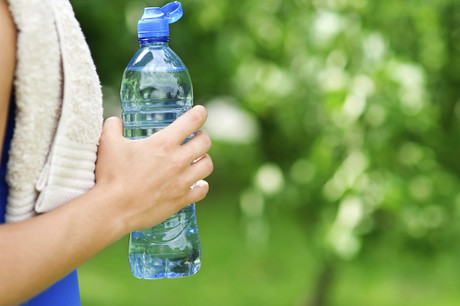WHO to investigate threat of plastic in water

Drinking high volumes of water on a daily basis in order to maintain a healthy lifestyle has been the advice given to consumers for years. But with a study revealing that the majority of drinking water contains plastic fibres, what are the dangers of consuming it?
The World Health Organization (WHO) will address this in its review of the potential health risks.
Commissioned by Orb Media, scientists at the State University of New York in Fredonia analysed 259 bottles from 11 different brands purchased in nine countries and found that 93% of bottled water had signs of microplastic contamination. On average, the researchers found 10.4 microplastic particles per litre (MPP/L) of water that were bigger than 100 µm in size, but when looking at smaller particles (6.5–100 µm) this number reached as high as 10,000 MPP/L in one bottle.
After testing the same brand of water that was packaged in plastic and glass, the researchers found there was a higher plastic contamination in the plastic bottle and concluded that the packaging may be a large contributor to this contamination.
In comparison to a previous study which looked at tap water, the researchers stated that they “found roughly twice as many plastic particles (>100 µm) within bottled water as compared to tap water on average (10.4 vs. 5.45 particles/L)”. This variation could be due to the lack of standardised testing methods, but there are several studies pointing out the presence of plastics of any kind.
Therefore, public concern is mounting in regard to how much plastic we may consume over our lifetime, and whether it would result in any short- or long-term health effects.
“When we think about the composition of the plastic, whether there might be toxins in it, to what extent they might carry harmful constituents, what actually the particles might do in the body — there’s just not the research there to tell us,” Bruce Gordon, coordinator of the WHO’s global work on water and sanitation, told the BBC.
“We normally have a ‘safe’ limit, but to have a safe limit, to define that, we need to understand if these things are dangerous, and if they occur in water at concentrations that are dangerous.”
Studies have highlighted the potential for plastic particles to enter the body through a variety of different methods, such as consuming fish that have been exposed to plastic in the ocean. But Martin Wagner, a toxicologist at the Norwegian University of Science and Technology, suggested that he is not concerned about the prospect of consuming or digesting microplastics.
“Based on what we know so far about the toxicity of microplastics — and our knowledge is very limited on that — I would say that there is little health concern, as far as we know,” he said. “I mean, that’s quite logical because I believe that our body is very well-adapted in dealing with those non-digestible particles.”
Orb Media suggested that the main issue is the fact that the potential ways that plastics could interact with the body is still unknown.
“As many as 90% of microplastic particles consumed might pass through the gut without leaving an impression, according to a 2016 report on plastic in seafood by the European Food Safety Authority.
“Some particles might lodge in the intestinal wall. Others might be taken up by intestinal tissue to travel through the body’s lymphatic system. Particles around 110 µm in size (0.11 mm) can be taken into the body’s hepatic portal vein, which carries blood from the intestines, gallbladder, pancreas and spleen to the liver.”
The company concluded that more research is needed to bridge the knowledge gap regarding the health impact of plastics in the body.
Matthews' stand offering deep 2D barcoding intel at FoodTech Qld
2D barcode demonstrations will be part of Matthews' offerings on its stand at FoodTech Qld in...
Out of the box: 2025 PIDA Awards finalists announced
Finalists have been announced for the 2025 Australasian Packaging Innovation & Design (PIDA)...
Registrations open for Australasian Packaging Conference
Early-bird registrations are now open for the 2025 Australasian Packaging Conference, coordinated...














